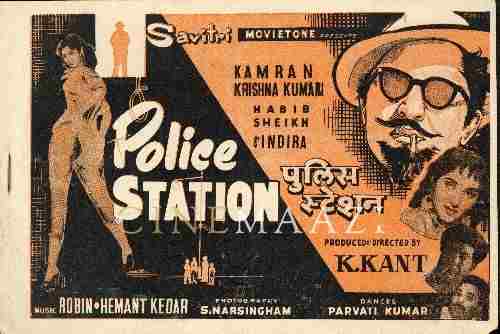Talat Mahmood

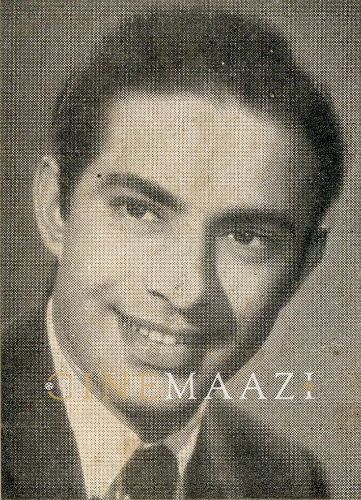
- Real Name: Talat Mahmood
- Born: 24 February 1924 (Lucknow)
- Died: 9 May 1998 (Mumbai)
- Primary Cinema: Hindi
- Parents: Manzoor Mahmood, Rafi-un-Nisa Begum
- Spouse: Nasreen
- Children: Khalid Mahmood, Sabina
Known popularly as the Shahenshah-e-Ghazal (King of Ghazals) of Hindi cinema, Talat Mahmood is still remembered for his remarkably velvety, soulful voice. For his scores of fans, some of them even international, his voice with its distinct quiver continues to resound in the immortal melodies of many of the best composers of his day.
Born on 24 February, 1924 in Lucknow, Talat was one of three brothers and three sisters born to Manzoor Mahmood and his wife, Rafi-un- Nisa. His father, Manzoor Mahmood was a member of the Indian Medical Mission to Ottoman Turkey, which was led by Dr Mukhtar Ahmed Ansari in 1912-1913. He demonstrated an affinity for music at a very young age, often attending night-long mehfils and mushairas. As a young boy, he nursed an ambition to become a singer-actor like his idol K L Saigal, but his father, was staunchly against his son becoming an actor. Once he had completed his schooling in Aligarh, at the insistence of his progressive aunt, Manzoor Mahmood admitted Talat in the Marris College of Hindustani Music in Lucknow (now known as the Bhatkande Music Institute). He studied music there for three years.
In December 1939, Talat Mahmood sang for All India Radio for the first time. Soon, he was singing ghazals written by Daag, Mir and Jigar for the radio in Delhi, Lucknow and Lahore. The rare quality of his voice was noticed by professionals from HMV, and they gave him his first big hit in 1941 with the song Sab din ek samaan nahi tha. By the time his record Tasveer teri dil mera behlaa na sakegi released under the same label, New Theatres in Calcutta was clamouring for his voice. Hoping to bump into his idol K.L. Saigal, Talat moved to Calcutta in 1944. New Theatres’ singing screen star Kanan Devi liked his voice so much that she insisted he be included in the film Raj Lakshmi (1945), in which he both acted and sang two songs. Singing in Calcutta under the name of Tapan Kumar, he also acted and sang in films like Samapti (1949) and Tum Aur Main (1948). He also met his wife Nasreen in Calcutta. Formerly known by the name of Latika Mullick, she was a popular actress in Calcutta at the time.
In 1949, while the country was still healing from the wounds of Partition and the newly flourishing film industry in Bombay was on the hunt for a replacement for K.L. Saigal, Talat moved to the city. His fame as a singing star preceded him, and the legendary composer Anil Biswas immediately took him under his wing. He bolstered Talat’s confidence, reassuring him that the unique tremble in his voice was what lent it an unmistakable allure. Talat thus sang his first song in Bombay, Ae dil mujhe aisi jagah for Anil Biswas’ composition in the film Arzoo(1950). Picturized on Dilip Kumar, the song shot him to greater heights of fame almost overnight, and he became the go-to voice for the gentle, tragic lover usually played by Dilip Kumar. He sang for him again in songs like Mera jeevan saathi bichhad gaya in Babul (1950), the Lata Mangeshkar duet Seene mein sulagte hain armaan in Tarana (1951), Aye mere dil kahin aur chal in Daag (1952) and Sham-e-gham ki kasam in Foot Path (1953), among others. He did not remain confined to the voice behind Dilip Kumar, however. He also sang for other stars of the day like Dev Anand, Raj Kapoor, Guru Dutt, Pradeep Kumar, Shashi Kapoor, Shammi Kapoor and Bharat Bhooshan.
Between 1951 and 1955, Talat lent his mellifluous voice to as many as 127 films. His soft voice, coupled with his flawless Urdu diction and his popularity meant that he gave the greatest vocal articulation to the form of the ghazal in mainstream film music, lending inspiration to later singers like Mehdi Hassan and Jagjit Singh. Talat’s delicate voice often posed a challenge to music composers used to employing large orchestral arrangements, but music composers like Anil Biswas, Naushad, C. Ramachandra and Shankar-Jaikishan rose to the challenge, employing novel methods to showcase his trademark lilt. Talat was also one of the composer Salil Chowdhury’s favourites, and he sang most of the songs for him in the film Chhaya (1961).
The acting bug had not abandoned him, however, and with his dashing looks, he tried his luck at starring in a few films in Bombay as well, starting with the Dev Anand-Madhubala starrer Aaram (1951). A quiet, mild-mannered, unassuming man off the screen, Talat played characters much like himself in these movies. In the film Sone Ki Chidiya (1958), he received an opportunity to share the screen with his personal favourite, Nutan. While Dil-E-Nadan (1953), Waris (1954), Ek Gaon Ki Kahani (1957) and Lala Rookh (1958) do deserve special mention, most of these films failed at the box office. He realized he could not compete with the star power of Dilip Kumar, Dev Anand or Raj Kapoor, and his friend Shammi Kapoor suggested that he devote himself single-mindedly to the pursuit of his singing career.
By this time, however, his competitors had cemented their place as playback singers in the industry, and opportunities for Talat were already few and far between. Always an advocate for Talat, Dilip Kumar asked for him to voice the song Yeh mera deewanapan hai in Yahudi (1958), but the composer Shankar prevailed upon him to let Mukesh sing it instead. Madan Mohan tried to revitalize his career with the songs Phir wohi sham wohi gham and Teri aankh ki aansoon pee jaoon in Jahan Ara (1964), but Talat’s star had started fading from the firmament. In the seventies, he was asked to sing for only four films, including Woh Din Yaad Karo (1971), Subah Zaroor Aayegi (1977) and Toofani Takkar (1978).
With great insight and relying on his considerable international following, Talat devoted his time to singing non-film ghazals and performing in shows both in India and abroad. He performed to enraptured audiences in both the Royal Albert hall in London and Madison Square, New York city. Talat also had a talent for composing, and he set his non-film ghazals Tumne ye kya sitam kiya and Gham-e-aashiqui se keh do to tune himself. Over the length of his career, he sang nearly eight hundred songs in various languages like Hindi, Gujarati, Punjabi, Sindhi, Telugu, Kannada and Marathi. He was awarded the Maharashtra State Award for Best Playback Singer for the film Putra Vhava Aisa as well. In 1992, the Indian state government felicitated his contribution to film music with a Padma Bhushan.
Towards the end of the seventies, Talat willingly withdrew from the world of film music. In his own words, he no longer wanted to perform in an era "where music had become just noise". His failing health forced him to retire from his live shows in the eighties, and he succumbed to a cardiac arrest on 9 May 1998 in Mumbai, leaving behind an immense legacy.
-
Filmography (13)
SortRole
-
Lala Rookh 1958
-
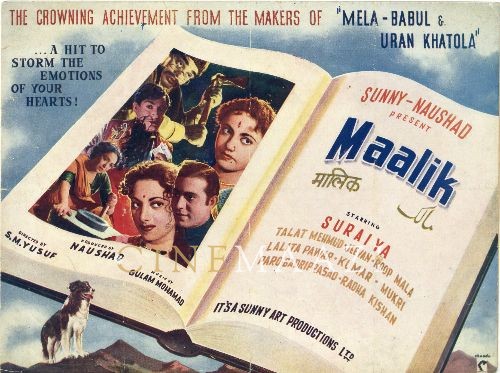
Maalik 1958
-
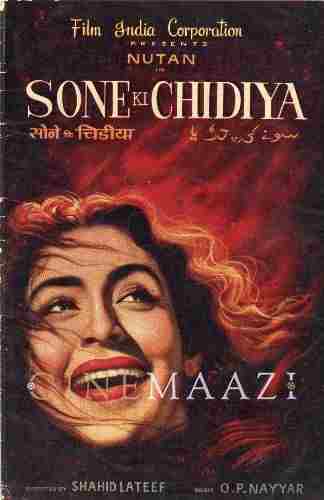
Sone Ki Chidiya 1958
-
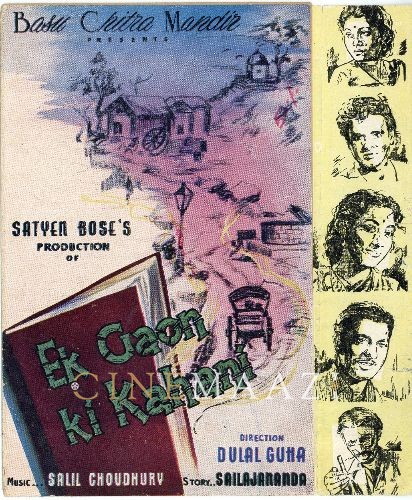
Ek Gaon Ki Kahani 1957
-
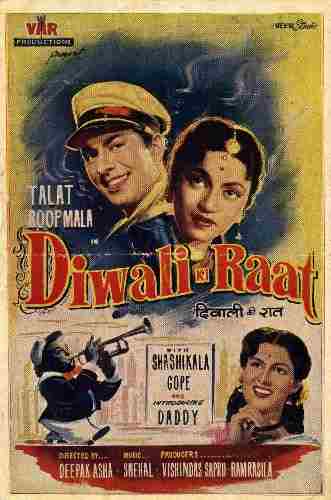
Diwali Ki Raat 1956
-
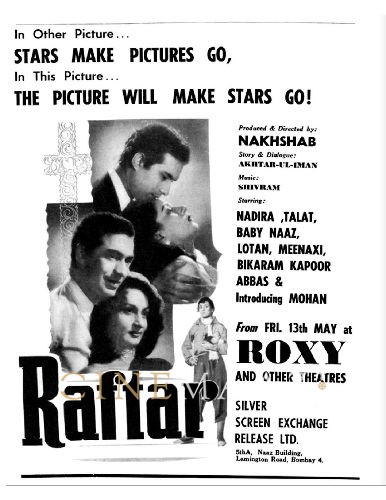
Raftaar 1955
-
Daak Baabu 1954
-
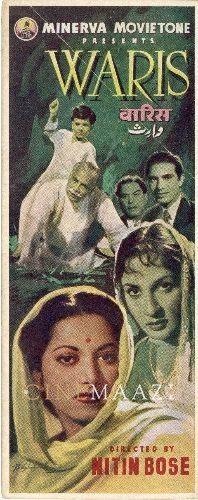
Waris 1954
-
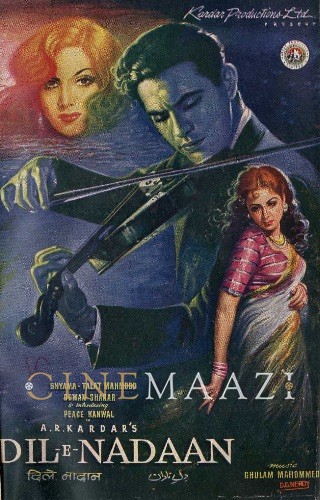
Dil-E-Nadan 1953
-
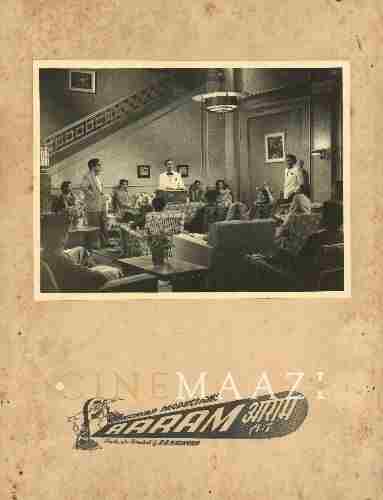
Aaram 1951
-
Samapti 1949
-
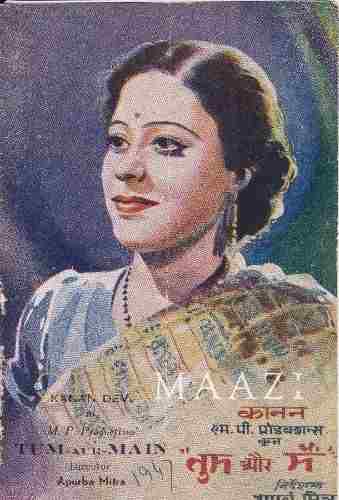
Tum Aur Main 1946
-




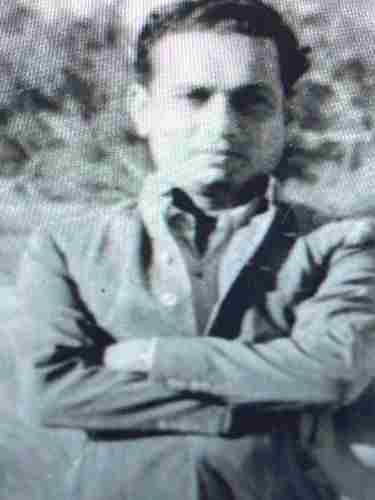
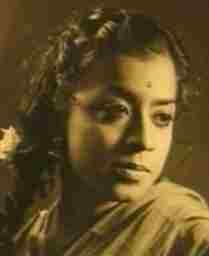

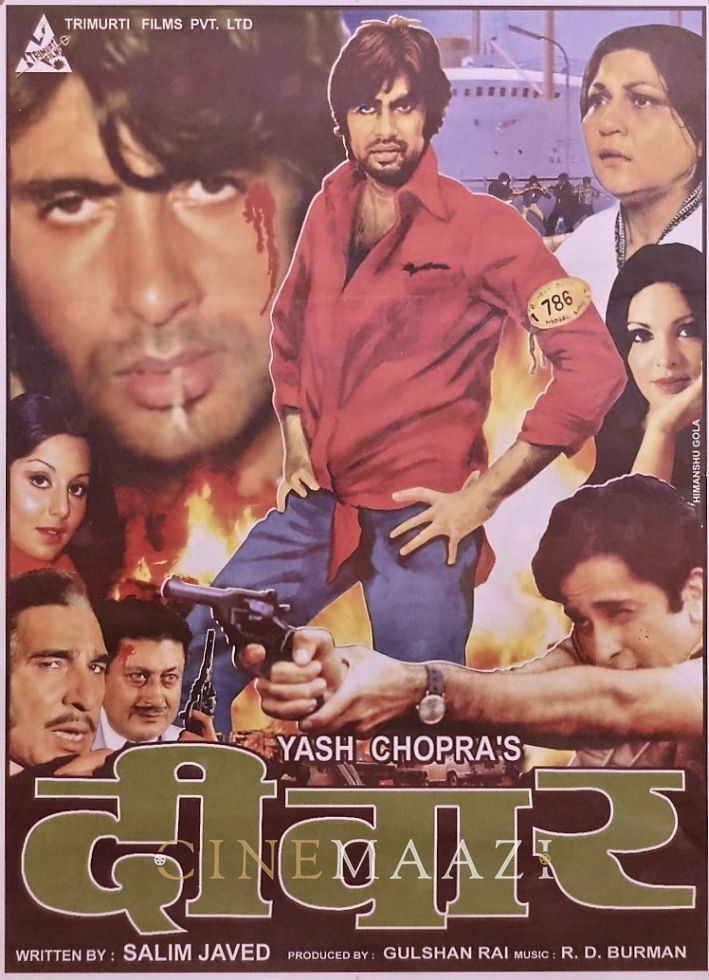
.jpg)

